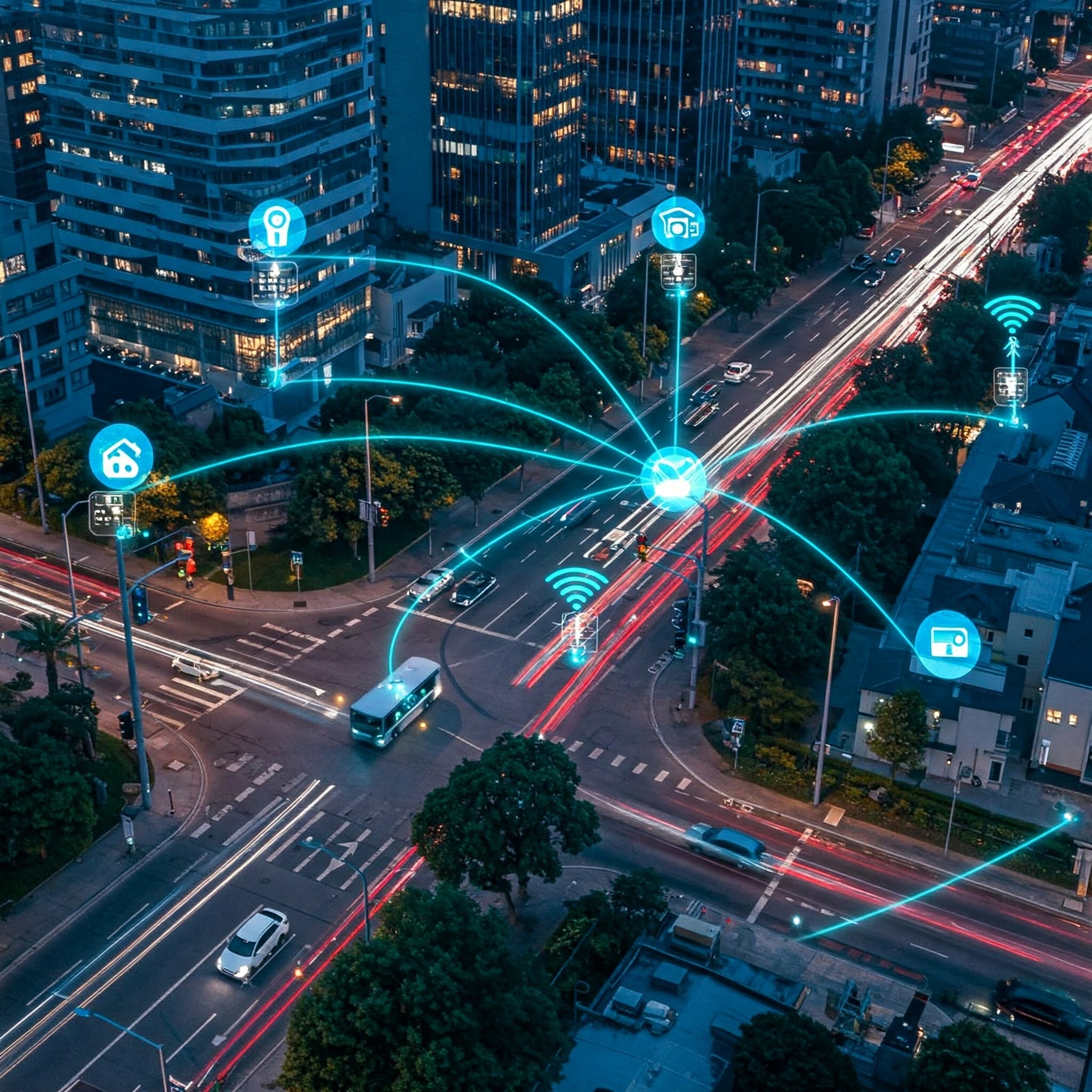

As we navigate an era defined by unprecedented technological advancements, the strain on our fiber-optic networks has never been more pronounced. The surge in applications like AI-driven systems, autonomous vehicles, and immersive AR/VR experiences in urban centers is pushing band
width requirements to their limits [1]. Simultaneously, the imperative to extend robust internet access and AI-powered tools to rural communities is critical for achieving digital equity and fostering efficiency and growth in rural production [2]. These dual pressures are catalyzing a fundamental transformation in Fiber-to-the-X (FTTx) network architectures, driving a shift from traditional splitter-based models to direct distribution systems.
The Driving Forces Behind the Change

In bustling urban environments, technologies like self-driving vehicles, drone delivery services (such as Amazon Prime Air), and intricate smart city ecosystems demand vast bandwidth and ultra-low latency. Applications like remote surgeries, powered by AR/VR, necessitate stable, high-speed connections for seamless real-time interactions [3]. Conversely, rural areas are increasingly reliant on fiber deployments to enable AI-driven efficiencies in agriculture and other sectors, bridging the digital divide [2].
This dichotomy underscores not only our growing dependence on robust fiber networks but also the necessity for an architectural evolution in FTTx—from centralized or distributed splitter designs to direct distribution. While direct distribution eliminates the inherent complexities of splitters, it introduces new challenges based on varying urban densities and rural distances.
From Splitters to Direct Distribution: A Technical Overview
Traditional Architectures: Historically, FTTx networks have relied on centralized splitters, located at central hubs, or distributed splitters, strategically positioned throughout the network, to manage signal distribution. These designs offered a balance between cost and flexibility but introduced inefficiencies and limitations. Specifically, in traditional splitter-based systems, the optical signal is divided multiple times, leading to significant insertion loss and reduced signal strength for end-users. This can result in slower speeds and higher latency, especially as the number of users connected to a single splitter increases, causing congestion.

The Shift to Direct Distribution: With the escalating demands for bandwidth and the growing scalability needs of both urban and rural deployments, direct distribution is emerging as the preferred architecture. By providing a dedicated fiber connection from each subscriber directly to the central office, without the use of splitters, it significantly improves performance, reduces network complexity, and simplifies management [1]. This approach eliminates insertion loss and ensures consistent, high-performance connectivity, crucial for latency-sensitive applications.

Challenges and Area-Specific Considerations
Urban Deployments: In densely populated cities, the sheer volume of connections necessitates ultra-scalable solutions. Space constraints, coupled with the rapid pace of deployment, require innovative strategies to minimize disruption [3].
Rural Deployments: In sparsely populated rural areas, the cost per connection can be higher due to longer distances and lower subscriber density, necessitating cost-efficient designs and strategic planning [2].
Key Design Principles for Distribution Terminals
Despite these architectural changes, certain design principles for distribution terminals remain universally crucial:
Discreet: Especially in urban settings, terminals must seamlessly blend into their surroundings to meet aesthetic and regulatory requirements.
Robust: Long-term reliability in both harsh rural environments and dense urban landscapes is essential.
Modular: The ability to seamlessly transition from splitter-based to direct distribution architectures ensures future-proofing.
Ease of Installation: This is where the differences become significant:
Conclusion
The evolution of FTTx architecture from splitter-based designs to direct distribution is not merely a technical adjustment but a necessary response to the evolving socio-economic and technological landscape. As cities push the boundaries of innovation and rural areas embrace connectivity to drive growth and equality, the future of FTTx is being shaped by flexibility, scalability, and ingenuity. Moreover, the selection of fiber distribution terminals and connectors plays a pivotal role in determining both CAPEX and OPEX. Well-designed terminals and connectors can streamline installations, reduce maintenance costs, and ensure long-term network reliability [3].
What are your experiences with these evolving FTTx architectures? Share your thoughts and insights below!
References:
If you want to know more about us, you can fill out the form to contact us and we will answer your questions at any time.
Shenzhen ADTEK Technology Co., Ltd., founded in 2007, is a national high-tech enterprise that integrates R&D, manufacturing, and sales. As a leading provider of optical connectivity solutions, ADTEK brings over 18 years of design and manufacturing experience, specializing in customized fiber optic connectivity products for domestic and international telecom operators, cloud service providers, equipment manufacturers, and system integrators.
We use cookies to enhance your experience on our website. By using our website, you agree to their use.
Websites store cookies to enhance functionality and personalise your experience. You can manage your preferences, but blocking some cookies may impact site performance and services.
Essential cookies enable basic functions and are necessary for the proper function of the website.
Statistics cookies collect information anonymously. This information helps us understand how visitors use our website.
Marketing cookies are used to follow visitors to websites. The intention is to show ads that are relevant and engaging to the individual user.
You can find more information in our Cookie Policy and Privacy Policy for ADTEK.